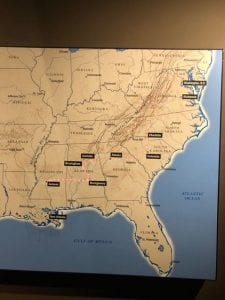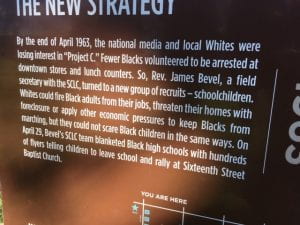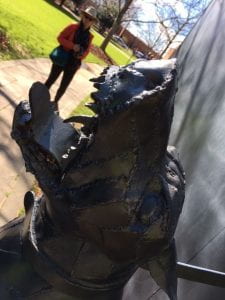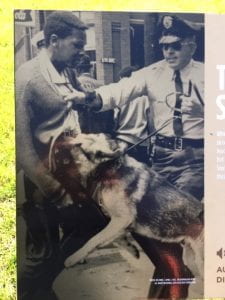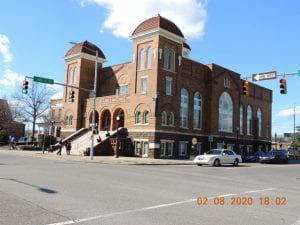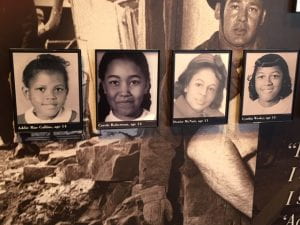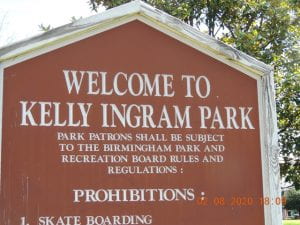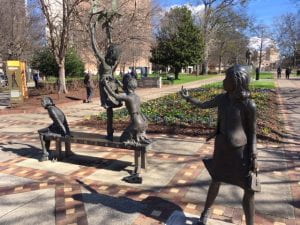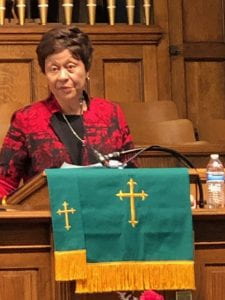Unlike Montgomery, Birmingham was facing its dark history head on. In 1921 it had the largest chapter of the Ku Klux Klan in the nation. So persistent was its targeted bombing campaign of the early 1960’s, it became known as “Bombingham.” During the Freedom Rides of 1961, it welcomed the college students on the bus with severe beatings. It attracted worldwide attention in May, 1963, when the city responded to the “Children’s March” with attack dogs and high pressure fire hoses.
Then on September 15, 1963 it exceeded all its previous atrocities with the bombing of the 16th Street Baptist Church, killing four young girls and injuring 20 other church members. As the 16th Street Church’s visitor’s guide said: “It was a shocking, terrifying day in the history of Birmingham and a day that forced white leaders to further come to grips with the city’s bitter racist reputation.”
With $300,000 dollars contributed, the church was restored and reopened by June 6, 1965. The beautiful stained glass image of the crucified black Christ (below) was donated by the people of Wales one year later. With the right hand, the crucified Christ pushes away the forces of oppression; with the left it welcomes 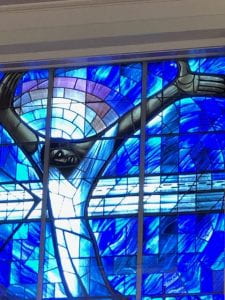 all people to the beloved community.
all people to the beloved community.
Kelly Ingram Park was created across the street from the church to memorialize the bombing with statues and descriptive plaques. Most striking are the dream-like figures of the four deceased girls and the savage portrayal of the attack dogs from the Children’s March.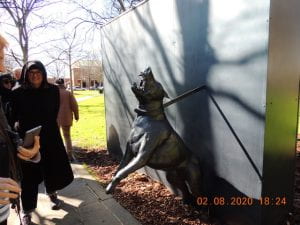
Also pictured below are three beloved clergymen praying for the fate of the Children’s March.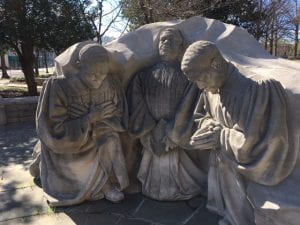
The images do not flatter the city for its shocking treatment of children, but literally carve the truth in stone in the surroundings of a memorial park for all to witness and reflect on. The 16th Street Baptist Church, the Birmingham Civil Rights Institute, and the Kelly Ingram Park are all on adjacent corners in the center of the district of Black commerce. The glory and shame of the city are fully on display.
Carolyn McKinstry, a young survivor of the church bombing, told us her story on Saturday afternoon from the pulpit of the church. She did not preach, but her gentle, yet firm manner testified that she remembered, but also forgave the men who attacked the vulnerable of her church. She said she had traveled the world over two decades and noticed that marginalized people exist in every country along with our own. When she was asked if the world would be different if Martin Luther King were alive today, she paraphrased him by saying: we have the power to change injustice and poverty right now, but not the will.
On a chilly and sunny day, we met the dark corner of Birmingham history, and it reminded me “The arc of the moral universe is long, but it bends toward justice.”(Theodore Parker, 1871, quoted by Martin Luther King in 1958).

